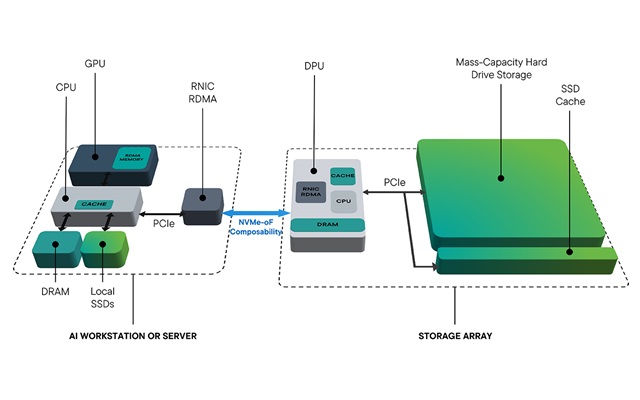Seagate Technology Holdings Plc warned that AI's exploding demand for data storage is fueling a carbon crisis in data centers, even as it unveiled next-gen storage solutions at Computex 2025. The company projects that global data volume will triple between 2023 and 2028, surpassing zettabyte levels and outpacing current manufacturing capabilities. A survey of over 300 data center professionals conducted by Seagate identified high energy consumption as the top obstacle to sustainable expansion.

Source: Seagate
"The value of data has never been greater, driven by AI's ability to extract insights," said Colin Presly, Seagate's VP of Customer Engineering, during his Computex keynote. However, he cautioned that this data surge is "amplifying the carbon footprint of our data centers and becoming a real problem for our industry."
Storage industry faces manufacturing shortfall
The scale of the challenge is stark. Seagate estimates the entire hard drive industry produces only 1-2 zettabytes of storage capacity annually, a fraction of projected data creation. A zettabyte represents one trillion gigabytes, highlighting the magnitude of the gap between supply and demand.
The company's survey of 1,000 IT professionals found that 72% either currently use AI or plan to implement it, with 90% of existing AI users believing that retaining historical data improves artificial intelligence outcomes. This reluctance to delete information is driving unprecedented storage demand, creating what industry analysts describe as a potential supply crunch.
Goldman Sachs Research forecasts global power demand from data centers will increase by as much as 165% by 2030, compared with 2023, adding urgency to efficiency improvements across the storage ecosystem.
NVMe hard drives target GPU integration
At its Computex booth, Seagate showcased prototype hard drives equipped with NVMe interfaces, traditionally reserved for faster solid-state drives. The demonstration included direct connections to Nvidia graphics processing units through data processing units, potentially simplifying data center architectures by unifying storage interfaces.
The technology allows mechanical storage to sit closer to AI processing units while maintaining compatibility with existing infrastructure. Single-lane NVMe drives would use current SATA connections, while dual-lane versions would leverage SAS interconnects, addressing enterprise concerns about legacy system integration.

Credit: Seagate
Seagate has not announced commercial availability for the NVMe hard drive technology, stating it is collecting customer feedback through the industry standards organization OCP to finalize specifications.
HAMR technology enters production
The company's heat-assisted magnetic recording technology, branded Mozaic 3+, has entered volume production after more than 20 years of development and over US$1 billion in investment. The technology uses integrated lasers to heat magnetic media to 800 degrees Fahrenheit within nanoseconds, enabling higher data density within the same physical footprint.
The HAMR technology promises higher data density within the same physical footprint. However, the technology's commercial adoption rate remains to be demonstrated as customers evaluate performance and reliability in production environments.
E-waste challenge highlighted
Presly revealed that 200 million hard drives are destroyed annually through industrial shredding, primarily due to data security concerns when devices are retired from data centers. This practice converts functional hardware into waste, representing a significant environmental inefficiency.
Seagate has developed encryption techniques working with standards organizations NIST and ISO that enable secure drive reuse through cryptographic key deletion. The company's recycling programs have reclaimed over one metric ton of rare earth magnets from discarded drives, though this represents a small fraction of industry-wide waste.
New features like autonomous drive regeneration allow continued operation even when individual components fail, potentially extending device lifecycles. However, adoption of these lifecycle extension technologies across the broader industry remains inconsistent.
Industry seeks balance
Seagate's internal studies position hard drives as having the lowest embodied carbon footprint compared to SSDs and tape storage when measuring full lifecycle emissions. However, the company acknowledged that optimal data center design requires strategic deployment of multiple storage technologies rather than relying on any single solution.
Major cloud service providers are already implementing mixed storage architectures to balance performance requirements with cost and environmental considerations. SSDs remain essential for high-performance applications requiring direct GPU access, while hard drives handle bulk storage needs.
The challenge facing the industry extends beyond individual companies. Data center operators must navigate energy infrastructure limitations that often cannot be upgraded to meet AI processing demands, while balancing growth requirements against mounting pressure to reduce carbon emissions.
As AI adoption accelerates across industries, the tension between computational demands and environmental sustainability is likely to intensify, making storage efficiency innovations increasingly critical for the sector's long-term viability.
Article edited by Levi Li




